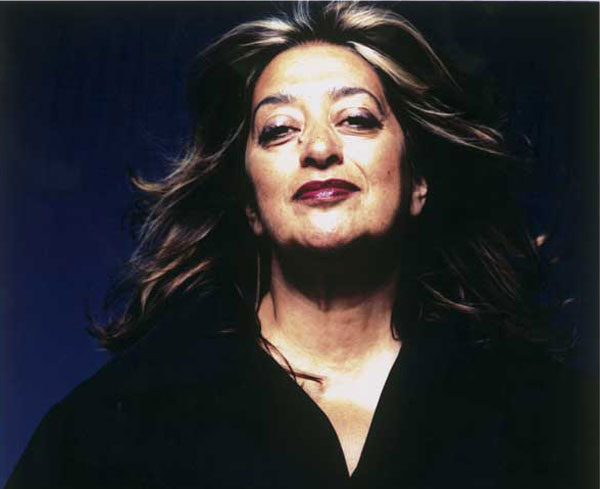
08 Oct 10 Inspirational and Architectural Lessons from Zaha Hadid
Born in Baghdad in1950, British- Iraqi Zaha Hadid is the first woman architect to win the prestigious Pritzer Prize, which she did in 2004. Her childhood saw Baghadad’s better days without strife and warfare.
Today she is well revered and in the forefront of architectural design. She has broken through the glass ceiling and her modern, cutting edge philosophies have helped her to push the boundaries of architecture and design. Today her firm employs 350 people and has handled 950 projects in over 44 countries.
1. “Architecture is really about well-being. I think that people want to feel good in a space… On one hand it’s about shelter, but it’s also about pleasure.”
2. “One of the things I feel confident in saying we can bring some excitement and challenges to people’s lives. We want them to be able to embrace the unexpected.”
3. “For a woman to go out alone in architecture is still very, very hard. It’s still a man’s world.”
4. Hadid was influenced by her early childhood “on villages of the marshes in Southern Iraq. The beauty of the landscape where sand, water, buildings and people all somehow flowed together.”
5. “There are 360 degrees. Why stick to one?”
6. “You see more established, respected female architects all the time. That doesn’t mean it’s easy. Sometimes the difficulties are incomprehensible… In practice I still experience resistance, but I think that keeps me focused. Perhaps it was my flamboyance rather than being a woman that gives me such determination to succeed, but I have always been determined”
7. “I really believe in the idea of the future.”ther than being a woman that gives me such determination to succeed, but I have always been determined”
8. “You are not confined to look at a space in one given way. You can really wonder around.”
9. “It is insufficient for architecture today to directly implement an existing building typology; it instead requires architects to carefully examine the whole area with new intervention and programmatic space.”
10. “You don’t always have to show art in what’s called a white box. You can have a kind of complexity within an exhibit which actually respects the art as well.”




No Comments